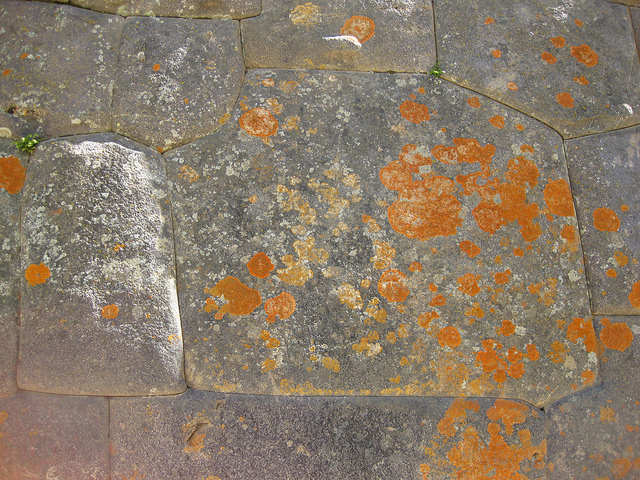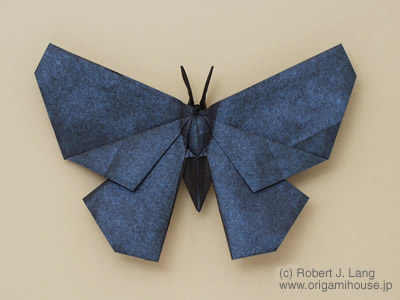Copywrong?
[ by Charles Cameron — borrowing as the nature of creativity from lichen to origami, copyright ]
.
**
Leonardo in his Treatise on Painting came up with what he called “a new theoretical invention for knowledge’s sake … of great utility in bringing out the creativity in some of these inventions”:
This is the case if you cast your glance on any walls dirty with such stains or walls made up of rock formations of different types. If you have to invent some scenes, you will be able to discover them there in diverse forms, in diverse landscapes, adorned with mountains, rivers, rocks, trees, extensive plains, valleys, and hills. You can even see different battle scenes and movements made up of unusual figures, faces with strange expressions, and myriad things which you can transform into a complete and proper form constituting part of similar walls and rocks. These are like the sound of bells, in whose tolling, you hear names and words that your imagination conjures up.
Borrow, he says, from nature.
Michelangelo, you may recall, used to see statues in chunks of marble, then chip away the excess to reveal what had been there all along…
**
The stone-cutters whose marvelous ingenuity pieced together the stone wall in the Incan ruins of Ollantaytambo, Peru, depicted above in a photo by Teosaurio (under a CC BY-SA 2.0 license) borrowed stone from nature in somewhat the same manner, brilliantly.
Nature repaid the compliment, adding the colors of lichen to the sunlit and shadowed grey of stone.
**
In Paris, the artist Mademoiselle Maurice has been adding her own kind of lichen to the shadowed and sunlit walls of Paris, in an installation she calls spectrum – her lichen being composed entirely of small, colored origami folds, by way of honoring the origami peace cranes of Hiroshima artist Sadako Sasaki.
**
Origami?
Origami is an exquisite art in its own right, demonstrating once again that mathematics belongs as much to the arts and humanities as it does to the sciences and technology.
[Consider this bleeding together of arts and sciences as something of a crusade of mine. Photography is art, and it does not became science just because the photograph is of stars rather than stones: photography is science, and it does not become art simply because the stars are beautiful.]
One genius of the artful mathematics of folding would be Robert Lang, who, as Kevin Kelly just told us, “helped NASA design satellite folding/unfolding solar panels” and “uses computers to devise folding patterns to create impossibly detailed 3D organisms from a single piece of paper…”
One can hardly deny that his work is quite lovely:
**
One might wonder whether Lang is the genius, or mathematics? Does he borrow from God, from some principle immanent in universe?
His diagram depicted, left, below, “will, when folded by him, turn into a convincing Rhinoceros Beetle”
Of the Rhinosceros beetle or of the butterfly one might ask, as William Blake asked of the Tyger:
Did He smile His work to see?
Did He who made the lamb make thee?
Science, naturally, somewhat believes it has the answer…
**
Compare and contrast:
**
Inappropriately appropriated? The very concepts battle each other into oxymoron fatigue.
The painter Susan Morris borrowed Robert Lang’s beautiful design, itself a WoA — useful bureaucratese devised by a friend of mine for filing Works of Art in a category of their own – to make the painting, also a WoA, depicted above, right.
Morris, it seems to me, takes Lang in a direction pioneered by Frank Stella:
**
It was Kevin Kelly who juxtaposed Lang and Morris in the image above — in what I’d have claimed was a WoA in my DoubleQuotes format if I’d done it myself — so as to discuss copyright.
Or more precisely, copy — right or wrong?
Nature copies, without apology, with beauty – and, in the case of certain poisonous spores, without remorse. And are we not nature?
Here’s Leonardo again:
Don’t underestimate this idea of mine, which calls to mind that it would not be too much of an effort to pause sometimes to look into these stains on walls, the ashes from the fire, the clouds, the mud, or other similar places. If these are well contemplated, you will find fantastic inventions that awaken the genius of the painter to new inventions, such as compositions of battles, animals, and men, as well as diverse composition of landscapes, and monstrous things, as devils and the like. These will do you well because they will awaken genius with this jumble of things.
To study, to copy, to derive: this awakens genius. Who am I to disagree?








June 29th, 2012 at 11:14 pm
Would be of some use to contemplate the modern obsession with originality with the same detail you use here for copying.
.
And then, the obsession with proper names, unique individuals associated with “an originality.”
June 30th, 2012 at 5:25 pm
[…] A friend would give me a Search Engine Friendly URL, such as my CMS does, instead of an unfriendly one like: https://zenpundit.com/?p=10300. […]
June 30th, 2012 at 6:24 pm
Hi Larry:
.
There are benefits and drawbacks to both “search engine friendly” and “unfriendly” URLs. I’ve been thinking lately how glad I am that our URLs are simply post numbers (zenpundit.com/?p=####) rather than post titles (zenpundit.com/2012/06/29/William_Lind_on_the_Taliban’s_Operational_Art), because I like the ability to edit my post titles in my overall editing process (which is often many layers deep), and the supposedly “friendly” date_and_title_with_all_the_word_spaces_underlined system makes that more difficult, since I have to edit not only the title itself but also the URL with its pesky underlines each time.
.
On the other hand, I can see that if search engines base their results heavily on post titles and not on the contents, the system I like for ease of editing may be less than helpful in terms of SEO.
.
I’ll go with whatever Zen provides…
June 30th, 2012 at 6:38 pm
Curtis:
.
If I run across the right materials to shape something up along those lines, I surely will. FWIW, I tend to favor the old idea of “genius” as something one listens to or ignores, rather than something one is or isn’t.